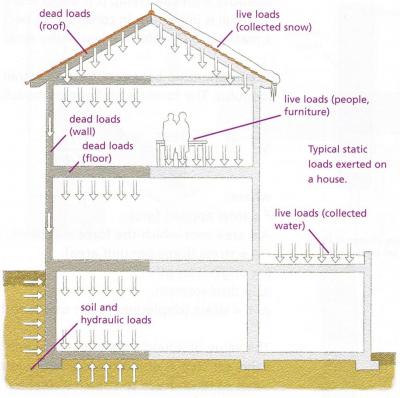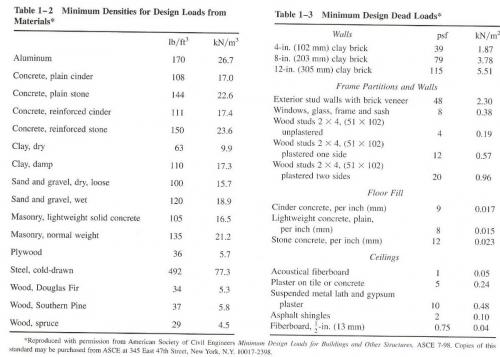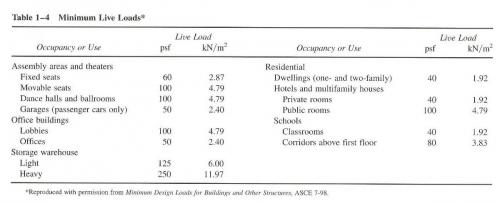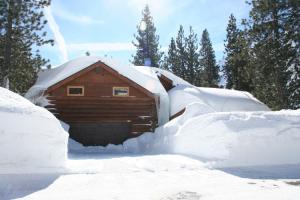Main menu
You are here
Types Of Loads On Structure
Types Of Loads On Structure
Loads

The loads are broadly classified as vertical loads, horizontal loads and longitudinal loads. The vertical loads consist of dead load, live load and impact load. The horizontal loads comprises of wind load and earthquake load. The longitudinal loads i.e. tractive and braking forces are considered in special case of design of bridges, gantry girders etc.
Types Of Loads:
- Dead Load
- Live Loads
- Wind Loads
- Snow Loads
- Earthquake Loads
- Hydrostatic and soil pressure
- Impact loads
1-Dead Load
Dead loads consist of the weight of the various structural members and the weights of any objects that are permanently attached to the structure. Hence, for a building, the dead load include the weights of the columns, beams, and girders, the floor slab, roofing, walls, windows, plumbing, electrical fixtures, and other miscellaneous attachments.

2-Live Loads
Live loads can vary both in their magnitude and location. They may be caused by the weights of objects temporarily placed a structure, moving vehicles, or natural forces. The minimum live loads specified in codes are determined from studying the history of their effects on existing structures. Usually, these loads include additional protection against excessive deflection or sudden overload.

Building Loads: The floors of buildings are assumed to be subjected to uniform live loads, which depend on the purpose for which the building is designed. These loadings are generally tabulated in local, state, or national codes.
Bridge Loads: Design live loadings for highway bridges are specified in the code of the American Association of State Highway and Transportation Official (AASHTO).
Other natural loads: Several other types of live loads may also have to be considered in the design of a structure, depending on its location or use. These include the effect of blast, temperature changes, and differential settlement of the foundation.
3-Wind Loads
When structures block the flow of wind, the wind’s kinetic energy is converted into potential energy of pressure, which causes a wind loading. The effect of wind on a structure depends upon the density and velocity of the air, the angle of incidence of the wind, the shape and stiffness of the structure, and the roughness of its surface.
For design purposes, wind loadings can be treated using either a static or a dynamic approach.

4-Snow Loads
In some parts of the country, roof loading due to snow can be quite severe, and therefore protection against possible failure is of primary concern. Design loadings typically depend on the building’s general shape and roof geometry, wind exposure, and location. Like wind, snow loads are generally determined from a zone map 50-year recurrence intervals of an extreme snow depth.

5-Earthquake Loads
Earthquakes produce loadings on structure through its interaction with the ground and its response characteristics. These loadings result from the structure’s distortion caused by the ground’s motion and the lateral resistance of the structure. Their magnitude depends on the amount and type of ground accelerations and the mass and stiffness of the structure.
6-Hydrostatic and soil pressure
When structures are used to retain water, soil, or granular materials, the pressure developed by these loadings becomes an important criterion for their design. Examples of such type of structures include tanks, dams, ships, bulkheads, and retaining walls. Here the laws of hydrostatics and soil mechanics are applied to define the intensity of the loadings on the structure.
7- Impact loads:
Impact load is caused by vibration or impact or acceleration. Thus, impact load is equal to imposed load incremented by some percentage called impact factor or impact allowance depending upon the intensity of impact.
Reference : R.C.Hibbeler
Types Of Loads On Structure

